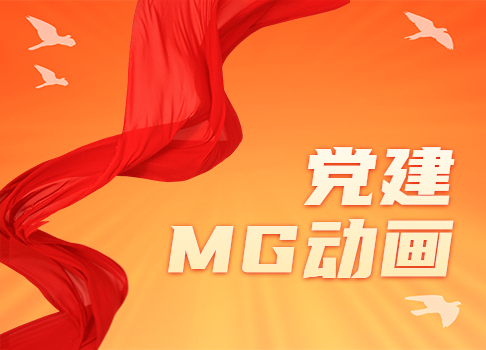3D动画制作弹力小球(3D动画制作弹力小球教程)
导读:3D动画制作弹力小球(3D Animation Tutorial: Creating Bouncing Ball)Introduction:3D animation has become an essential part of the entertainment industry. From movies to video games, it offers a lifelike experience that captivates audiences. In th
3D动画制作弹力小球(3D Animation Tutorial: Creating Bouncing Ball)
Introduction:
3D animation has become an essential part of the entertainment industry. From movies to video games, it offers a lifelike experience that captivates audiences. In this tutorial, we will explore the process of creating a bouncing ball, a fundamental exercise for 3D animators. By mastering the techniques involved, animators can apply them to more complex projects, enhancing their skills and creativity.
Part 1: Planning and Preparations
Before diving into the animation process, proper planning and preparations are crucial. Firstly, choose the software you are comfortable using, such as Maya or Blender. Then, gather visual references of bouncing balls to understand the physics behind their movements. Additionally, establish the desired characteristics of your ball, such as its size, material, and elasticity.
Part 2: Modeling the Ball
To bring the bouncing ball to life, start by creating a sphere in your 3D software. Adjust its size according to your preferences. Next, add texture and materials to make it visually appealing. Take into consideration the ball's surface properties, such as its glossiness or roughness. This step contributes to making the animation more realistic and engaging.
Part 3: Setting Up the Physics
To achieve a convincing bounce, it is essential to understand the principles of physics governing the movement of objects. Apply gravitational force to the ball, ensuring it falls down realistically. Adjust the ball's elasticity and weight to create a sense of believability. By simulating the physical properties accurately, you can generate a visually striking animation.
Part 4: Animation Techniques
Creating the bouncing motion requires careful attention to timing and spacing. Begin by animating the ball's first bounce, emphasizing the compression and release of its shape. Focus on achieving a smooth transition between each bounce, maintaining the ball's momentum and energy. Consider the timing of the bounces, allowing the ball to gradually lose height and momentum.
Part 5: Refining and Polishing
To elevate your animation to professional standards, refine and polish the details. Adjust the ball's squash and stretch attributes to enhance the illusion of elasticity. Pay attention to secondary motions, such as the ball's rotation and deformation during the bounces. Additionally, add subtle touches like shadows and lighting effects to make the scene more visually captivating.
Conclusion:
Creating a bouncing ball animation is a valuable exercise for aspiring 3D animators. By understanding the principles of physics and implementing the appropriate techniques, animators can bring life and realism to their projects. The process of planning, modeling, setting up physics, animating, and refining ensures a visually pleasing and engaging final result. With this fundamental skill under your belt, you can embark on more complex 3D animation projects, further expanding your expertise in the field.
3D动画制作弹力小球教程
一、概述

利用3D动画制作软件制作弹力小球是一项受欢迎的技术,它可以帮助动画制作者创建出逼真、生动的动画场景。本文将介绍3D动画制作弹力小球的具体步骤和技巧,帮助读者了解这一过程。
二、准备工作
在开始制作弹力小球之前,首先需要准备一些必要的软件和资源。3D动画制作软件如Maya、Blender等是必不可少的工具。还需要收集一些参考资料,包括弹力小球运动的视频或图片,以便更好地模拟物体的运动和行为。
三、建立场景
我们需要在软件中建立一个适合的场景。可以创建一个简单的地面和一个墙壁作为背景,以便观察小球的运动。通过设置材质和光照,可以使场景更加真实。
四、创建小球
我们需要创建一个小球模型。在3D软件中,可以使用基本几何体来制作小球,如球体或圆柱体。可以根据实际需求调整小球的大小和形状。
五、设置材质和贴图
为了使小球在渲染时具有更真实的外观,我们需要为其设置合适的材质和贴图。可以选择一个适合的材质类型,如金属、橡胶等,并为小球添加纹理,使其表皮看起来更加真实。
六、添加弹力属性
为了使小球具有弹力,我们需要为其添加弹力属性。在3D动画制作软件中,可以设置小球的弹性系数、摩擦力等参数,以模拟物体的真实运动和反弹行为。
七、定义运动路径
为了制作出有趣的弹力效果,我们需要定义小球的运动路径。可以通过设置小球的关键帧来控制其运动,在不同的时间点调整小球的位置、速度和方向,从而模拟出弹力小球的动态效果。
八、调整物理属性
在模拟弹力小球的过程中,我们还需要不断调整小球的物理属性,以使其运动更加真实。可以通过改变弹簧的刚度、阻尼等参数,来调整小球的弹性和阻力,从而达到理想的效果。
九、渲染和修改
完成上述步骤后,我们可以进行渲染,将3D场景和小球模型渲染成图像或视频。我们也可以根据渲染结果进行修改和调整,以获得更满意的效果。
十、总结
通过上述步骤,我们可以制作出具有弹力效果的小球动画。这个过程中,需要综合运用3D动画制作软件的功能和技巧,并通过不断调整和修改来达到理想的效果。希望本教程能够帮助读者更好地理解和掌握3D动画制作弹力小球的方法。
彩色有弹性又有趣
一、行业概述

彩色有弹性又有趣的行业是指彩色橡胶制品行业。这个行业以生产和销售各种彩色橡胶制品为主,产品涵盖了橡胶材质的玩具、手办、手环、鞋垫等多种领域。彩色橡胶制品因其鲜艳的颜色、柔软的质地和有趣的造型而备受消费者的喜欢。
二、市场需求和发展趋势
随着人们对个性化和创意产品的追求不断增加,彩色橡胶制品行业迅速崛起。消费者对于彩色橡胶制品的需求量逐年增加,市场潜力巨大。根据市场调研数据显示,目前全球彩色橡胶制品市场规模已经超过数百亿元,并且还在不断增长。
三、技术创新和产品创意
彩色橡胶制品行业的发展离不开技术创新和产品创意的支撑。一些企业不断投入研发力量,推出了一系列创新产品。一些彩色橡胶制品可以根据温度变化改变颜色,给人们带来了不一样的视觉体验;还有一些橡胶制品可以根据压力变化变形,增加了玩耍的趣味性。
四、产业链和供应链
彩色橡胶制品行业的发展离不开完善的产业链和供应链。在彩色橡胶制品的生产过程中,需要经过橡胶原料的采购、制造工艺的设计、生产加工的环节,然后再通过分销渠道将产品推向市场。橡胶原料的供应商、制造工艺的设计师、生产加工厂家和分销商之间的合作十分重要。
五、市场竞争和发展前景
彩色橡胶制品行业市场竞争激烈,不仅国内企业之间竞争激烈,而且国外品牌也在积极进军中国市场。为了在市场中取得优势,企业需要在产品质量、创新能力和市场拓展方面下功夫。虽然市场竞争激烈,但是彩色橡胶制品行业仍然有着广阔的发展前景,特别是在个性化和创意产品受到追捧的时代。
总结
彩色橡胶制品行业作为一个彩色有弹性又有趣的行业,在市场需求和发展趋势、技术创新和产品创意、产业链和供应链、市场竞争和发展前景等方面都存在着巨大的潜力。只有不断创新、提高产品质量,才能在市场竞争中立于不败之地,取得长期的发展,满足消费者对彩色有弹性又有趣制品的需求。










